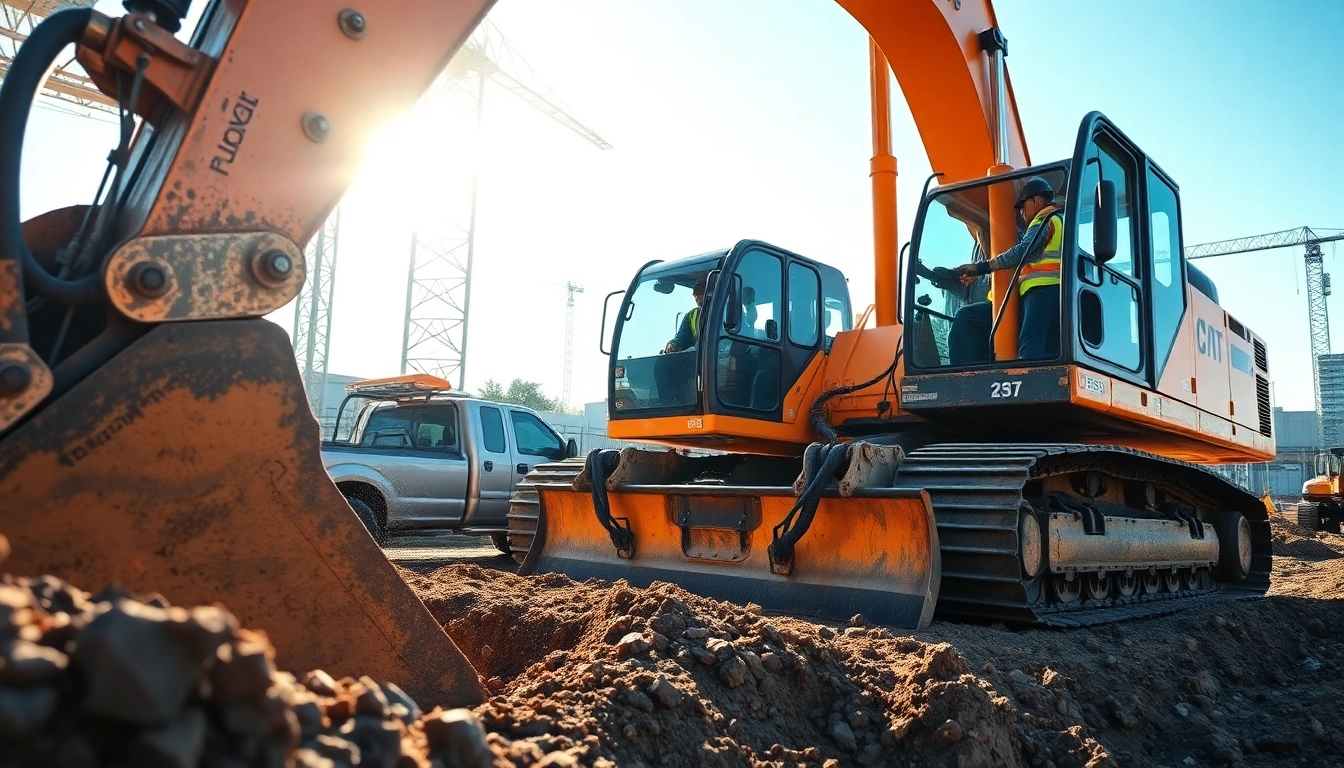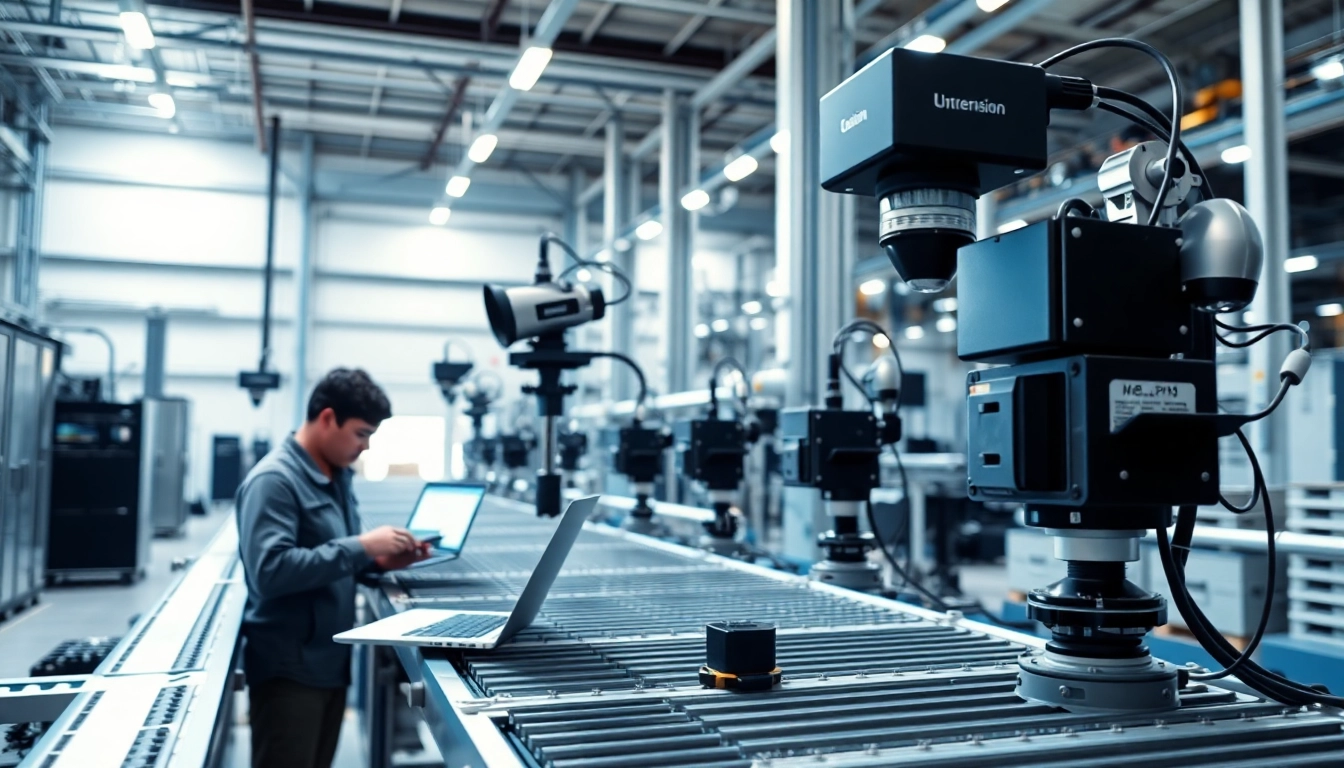Understanding Industrial Water Transfer Services
Definition and Importance
Industrial water transfer services refer to the methodologies, equipment, and strategic approaches employed to transport water from one location to another, typically for industrial purposes. This is critical in various sectors, including construction, mining, and energy production, where large volumes of water are necessary for operations. The efficient management of water transfer not only ensures a consistent supply for industrial activities but also plays a vital role in minimizing environmental impact and optimizing resource utilization. As industries recognize the significance of water as a valuable resource, the demand for specialized industrial water transfer services continues to grow.
Key Applications Across Industries
Industrial water transfer services have diverse applications across various industries:
- Energy Sector: In oil and gas extraction, water is needed for hydraulic fracturing, cooling, and other processes. Efficient water transfer is essential to support uninterrupted operations.
- Construction: Construction projects require water for mixing concrete, dust suppression, and general site activities, necessitating reliable transfer methods.
- Agriculture: Water is transferred for irrigation and livestock needs. Innovative systems help optimize water usage, ensuring sustainability.
- Mining: Water plays a crucial role in mineral extraction and treatment processes. Reliable transfer services help manage water supply effectively.
- Environmental Management: Water transfer is also critical in remediation projects and controlling runoff, helping maintain ecological balance.
Challenges in Water Transfer Management
Despite its importance, industrial water transfer faces several challenges:
- Infrastructure Limitations: Aging infrastructure or inadequate systems can hinder effective water transfer.
- Environmental Regulations: Compliance with stringent regulations can complicate the planning and execution of water transfer projects.
- Logistical Issues: Coordinating transportation logistics to ensure timely delivery can be complex, especially in remote locations.
- Seasonal Variations: Water availability can fluctuate seasonally, impacting industrial operations reliant on consistent supply.
- Cost Management: Rising costs associated with water supply and treatment pose financial challenges for businesses.
Components of Effective Water Transfer Systems
Types of Equipment Used in Industrial Water Transfer Services
An assortment of specialized equipment is vital to ensure the efficiency and effectiveness of industrial water transfer. Some notable equipment includes:
- Pumps: Various types of pumps, such as centrifugal and positive displacement pumps, are fundamental for moving water across different distances and elevations.
- Hoses and Pipelines: Lay flat hoses and rigid pipelines are essential components for transporting water. The choice depends on the application, volume, and distance.
- Valves and Flow Meters: These control the flow and monitor the amount of water being transferred, helping optimize operations further.
- Storage Tanks: Temporary or permanent storage solutions are necessary for managing supply, especially during peak demand periods.
- Filtration Systems: To ensure water quality, particularly in sensitive environments, filtration systems help treat water before and after transfer.
Best Practices for System Setup and Maintenance
Establishing a robust water transfer system demands attention to detail and adherence to best practices:
- Conducting Site Assessments: Thorough evaluations of the site and intended water use are crucial for designing an effective system.
- Regular Maintenance: Scheduled inspections and maintenance of equipment prevent failures and prolong lifespan.
- Training Personnel: Ensuring the workforce is well-trained in equipment use and safety protocols enhances operational efficiency and reduces risks.
- Implementing Monitoring Systems: Real-time monitoring of water transfer reduces wastage and improves tracking for accountability.
- Emergency Preparedness: Having contingency plans in place for equipment failures or unforeseen demand spikes helps mitigate disruptions.
Safety and Compliance Regulations
Safety and compliance are paramount in water transfer services. Organizations must adhere to local, state, and federal regulations governing water usage, environmental protection, and workplace safety:
- Environmental Impact Assessments: Conducting these assessments is essential when establishing water transfer operations to minimize ecological disruptions.
- Health and Safety Training: Employees should receive adequate training on handling equipment and responding to emergencies, supporting a culture of safety.
- Regular Compliance Audits: These audits help ensure that water transfer processes adhere to regulatory standards, reducing legal risk.
- Documentation: Maintaining thorough documentation of operations, water sources, and safety protocols is critical for transparency and accountability.
Innovative Technologies in Water Transfer
Automation and Digital Monitoring Tools
Technology is revolutionizing how water transfer services operate, enhancing efficiency and reducing costs:
- Remote Monitoring Systems: These systems enable operators to monitor water levels, flow rates, and equipment status from a centralized location, facilitating quick decision-making.
- IoT Devices: Internet of Things (IoT) technology allows for real-time data collection and analysis, streamlining operations and improving maintenance schedules.
- Drones: Drones equipped with sensors can survey large areas for infrastructure assessments and monitor water sources, providing valuable data for operational improvements.
- Automated Controls: Implementing automated controls for pumps and valves enhances system responsiveness, reducing the risk of overflows and under-supply.
Efficiency and Cost-Effectiveness through Technology
By integrating technology into water transfer operations, businesses can realize significant cost savings and efficiency gains:
- Operational Cost Reduction: Automation and data-driven decision-making reduce labor costs and increase productivity.
- Energy Efficiency: Smart pumps and systems can optimize energy consumption, leading to cost savings and reduced carbon footprint.
- Enhanced Resource Management: Advanced analytics allow for better forecasting of water needs, reducing waste and optimizing supply use.
- Improved Transparency: Digital tools provide stakeholders with real-time information about water usage, fostering trust and accountability among businesses and communities.
Future Trends in Industrial Water Transfer Services
The landscape of industrial water transfer services is evolving, driven by both technological advancements and changing market demands:
- Increased Focus on Sustainability: Emphasizing sustainable practices in water sourcing, transfer, and recycling to reduce environmental footprints.
- Decentralized Systems: The rise of localized water management solutions that allow for on-site processing and transfer of water, minimizing transportation needs.
- Integration of Artificial Intelligence: AI will play a significant role in predictive analytics to forecast demand, identify maintenance needs, and enhance operational efficiency.
- Collaboration and Partnerships: Greater collaboration among industries, governments, and communities to address water scarcity and management challenges comprehensively.
Case Studies: Successful Water Transfer Implementations
Analyzing Projects in the Oil and Gas Sector
The oil and gas sector presents numerous case studies illustrating successful water transfer implementations:
Case Study 1: A major oil company utilized a modular water transfer system to supply water for hydraulic fracturing. By employing portable pumping solutions and lay flat hoses, they significantly reduced setup time and equipment costs while ensuring compliance with environmental regulations.
Case Study 2: Another project opted for real-time monitoring technologies, allowing them to track water usage efficiently. Over a year, this resulted in a 30% reduction in waste and optimized water sourcing strategies.
Water Management in Construction Projects
Construction projects often experience challenges related to water transfer:
Case Study 1: A large-scale construction site implemented a centralized water management system that used automated pumps and monitoring tools. These innovations facilitated real-time decision-making and improved water availability to reduce project delays.
Case Study 2: In a roadway expansion project, the use of environmentally sensitive techniques to transport water minimized impacts on surrounding ecosystems, showcasing best practices in sustainable water management.
Comparative Outcomes of Different Approaches
Analyzing various approaches to industrial water transfer highlights distinct benefits and drawbacks:
In assessing hydraulic fracturing, traditional methods using fixed pipelines showcased reliability but at the expense of higher costs and inflexibility. In contrast, modern modular systems allowed for rapid deployment and adjustment but required careful management of logistics and regulatory compliance.
Ultimately, the choice of approach should be dictated by project specificities, operational needs, and environmental considerations to achieve optimal outcomes.
Measuring Performance and Effectiveness
Key Performance Indicators for Water Transfer Services
Measuring the performance of industrial water transfer services can be effectively done through key performance indicators (KPIs):
- Water Utilization Rate: These metrics indicate the efficiency of water use during transfer and extraction processes.
- System Downtime: Tracking any downtime related to equipment failure or maintenance needs can help assess overall system reliability.
- Regulatory Compliance Rate: A significant indicator of performance, ensuring adherence to environmental and operational regulations.
- Cost per Gallon Transferred: This financial metric evaluates the cost-effectiveness of water transfer operations.
Feedback Mechanisms and Continuous Improvement
Implementing feedback mechanisms is crucial for continuous performance enhancement:
- Regular Surveys: Gather feedback from operators and stakeholders on system performance and areas for improvement.
- Performance Reviews: Schedule regular reviews to analyze KPIs and implement necessary adjustments based on findings.
- Invest in Training: Continuous training opportunities for teams ensure that all personnel are equipped with the latest industry knowledge and best practices.
Evaluating Environmental Impact and Sustainability
The environmental impact of water transfer is increasingly scrutinized, emphasizing the need for sustainable practices:
- Life Cycle Assessments: Conduct assessments to evaluate the environmental footprint of water transfer methods over their entire lifecycle.
- Water Recycling Programs: Implement strategies to recycle and reuse water within industrial operations to conserve precious resources and minimize waste.
- Community Engagement: Maintain open lines of communication with local communities to address concerns regarding water use and environmental stewardship.


